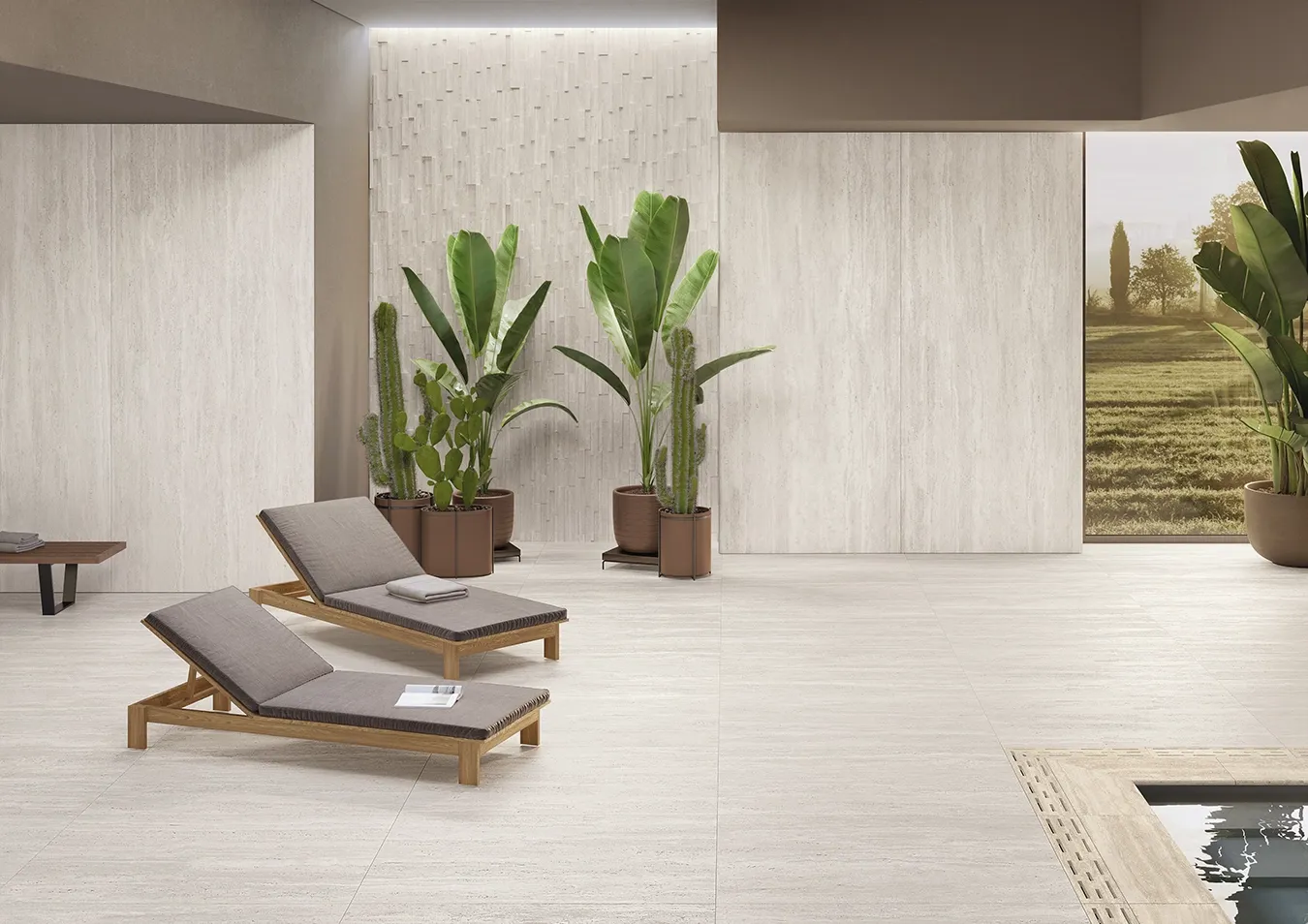The herringbone tile pattern is a testimony to the art and history of architecture, a symbol of refinement and style that has evolved over the centuries. This technique uses precisely cut tiles arranged to form a geometric pattern resembling the bones of a fish and has its origins in ancient Rome. Here, the herringbone pattern, known as "opus spicatum", was used not only for its aesthetic beauty but also for its ability to evenly distribute weight and pressure on floors and paths.
Over time, the herringbone has maintained its popularity, evolving into different variations and styles. In Italy, this design has been embraced for its ability to combine functionality and beauty, finding its place in historic residences, noble palaces and modern spaces. In fact, it was precisely aristocratic and exclusive houses that chose this type of solution to emphasise the elegance of their rooms and welcome prestigious guests.
The herringbone pattern is perhaps the most popular and desired installation method even today. From period homes, herringbone wooden floorboard effect stoneware has made its way to more contemporary homes, where it helps to bring warmth and style. One of the virtues of this installation is its ability to interact with light, both natural and artificial, creating attracting colour reflections and maximising the textural rendering of wood.















